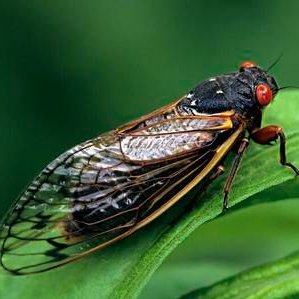Let's talk about cicadas!
May 20, 2024

There are over 3,000 species of cicada worldwide. 7 of these species are found right here in North America. There are 2 types of cicada, the annual and the periodical. As the name suggests, annual cicadas emerge every 2 years to mate. These are what we see normally in the summer months. Periodical Cicadas are cicadas that live underground in the Nymph phase of their metamorphic process for 13 or 17 years. The phenomena we are seeing this year is very rare. The last time the 13 and 17 year cicadas emerged simultaneously was 221 years ago, in 1803! With all these insects coming out of the ground you may be asking yourself, “what about my garden??” Good news! Cicadas do not feed on vegetation. They do not swarm entire crops and decimate 100's of fields. Nymph cicadas live underground and feed on plant roots. Mostly in areas around older mature trees. This means that the damage done to the roots by the cicada does not have a negative impact on the tree. As adults, cicadas will feed on tree sap.
The life cycle of a cicada starts with the egg. Male cicadas will “sing” to attract the female. Once they have mated, the female lays her eggs in woody plant tissue. Once these eggs hatch, the nymphs fall to the ground where they burrow and live underground for 2-17 years depending on the species. Then they will emerge, molt into their final adult stage and start this process all over again
Cicadas are a vital part of the ecosystem. They are a food source for much of the local wildlife and killing them off would be detrimental. There is no legal way to get rid of cicadas. Dogs also eat cicadas. Do not put pesticides out to try to get rid of the cicada as you will end up poisoning anything that eats them. The adult cicada is only around for 2-6 weeks to mate and lay the eggs. Mature trees are at no risk from cicadas. Protect small, newly planted trees by wrapping the trunks with screening to prevent female cicadas from laying eggs on the trunk.

